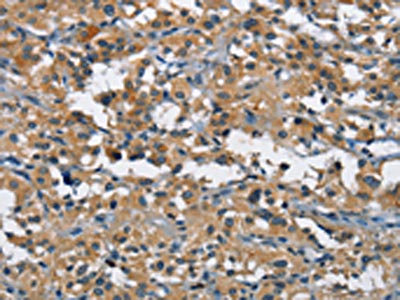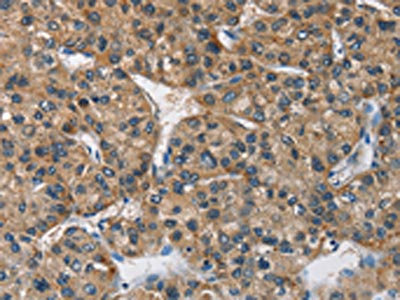
The image on the left is immunohistochemistry of paraffin-embedded Human thyroid cancer tissue using CSB-PA698112(BMPR1B Antibody) at dilution 1/25, on the right is treated with fusion protein. (Original magnification: x200)
BMPR1B Antibody

CSB-PA698112
ApplicationsELISA, ImmunoHistoChemistry
Product group Antibodies
ReactivityHuman
TargetBMPR1B
Overview
- SupplierCusabio
- Product NameBMPR1B Antibody
- Delivery Days Customer20
- ApplicationsELISA, ImmunoHistoChemistry
- CertificationResearch Use Only
- ClonalityPolyclonal
- ConjugateUnconjugated
- FormulationLiquid
- Gene ID658
- Target nameBMPR1B
- Target descriptionbone morphogenetic protein receptor type 1B
- Target synonymsactivin receptor-like kinase 6; ALK6; ALK-6; AMDD; BDA1D; BDA2; BMP type-1B receptor; BMPR-1B; bone morphogenetic protein receptor type-1B; bone morphogenetic protein receptor, type IB; CDw293; serine/threonine receptor kinase
- HostRabbit
- IsotypeIgG
- Protein IDO00238
- Protein NameBone morphogenetic protein receptor type-1B
- Scientific DescriptionThis gene encodes a member of the bone morphogenetic protein (BMP) receptor family of transmembrane serine/threonine kinases. The ligands of this receptor are BMPs, which are members of the TGF-beta superfamily. BMPs are involved in endochondral bone formation and embryogenesis. These proteins transduce their signals through the formation of heteromeric complexes of 2 different types of serine (threonine) kinase receptors: type I receptors of about 50-55 kD and type II receptors of about 70-80 kD. Type II receptors bind ligands in the absence of type I receptors, but they require their respective type I receptors for signaling, whereas type I receptors require their respective type II receptors for ligand binding.
- ReactivityHuman
- Storage Instruction-20°C or -80°C
- UNSPSC12352203

